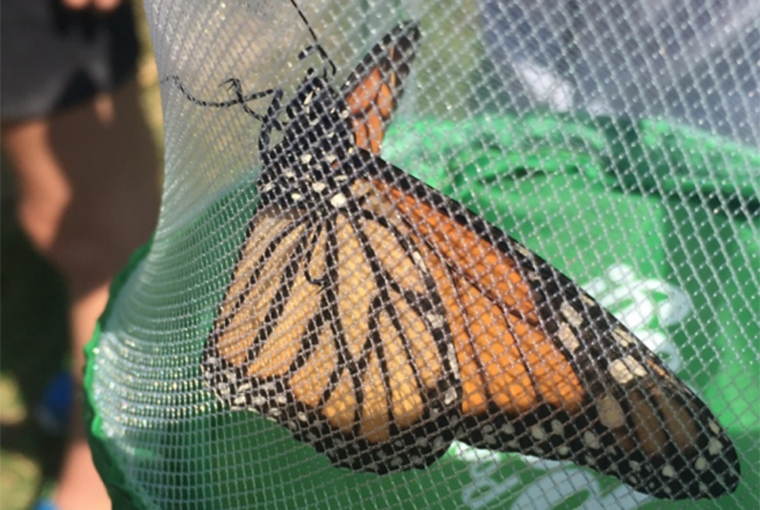Monitoring Migrating Butterflies along the Atlantic Coast

A captured Monarch awaiting its tag.
By Drew Ferrier, Ph.D., Professor of Biology and Director of the Center for Coastal and Watershed Studies
Have you seen any Monarch butterflies recently? Not long ago they were one of the most common butterfly species in our region, but their numbers have declined by about 80 percent in recent years. During winter 2016-17, the official population estimate of butterflies in Mexico, where the species congregates over the winter months, was 146 million Monarchs, compared to a long-term average of 300 million, and a peak of 1 billion in the mid-1990s.
These beautiful black and orange insects are found throughout North America during the summer but migrate to Mexico during the fall to over-winter before returning the next spring. To learn more about their migration and decline, a citizen-science project entitled Monarch Watch was begun in 1994. Last week, under the guidance of staff from the Nature Conservancy’s Brownsville Preserve, Hood Coastal Studies students captured and tagged migrating Monarchs during the insects’ Atlantic coast southward migration.
Hood students scoured a mature meadow on the preserve that would provide a likely resting spot for migrating Monarchs. Their efforts yielded a variety of butterflies. Monarchs were found amid such species as Variegated Fritillaries, Orange Sulphurs, Northern Pearly-eyes, Gray Hairstreaks, and Silvery Checkerspots. Monarchs were brought back to the Nature Conservancy facility for processing and tagging. Each butterfly’s sex and condition were recorded and a weather-resistant adhesive tag was attached to its hindwing for future identification. Butterflies were released, none the worse for their experience. We will be monitoring the Internet to see if our tagged individuals are recaptured along the remainder of their migration or at their Mexican destination.
- Undergraduate
- Center for Coastal and Watershed Studies
- Natural Sciences




